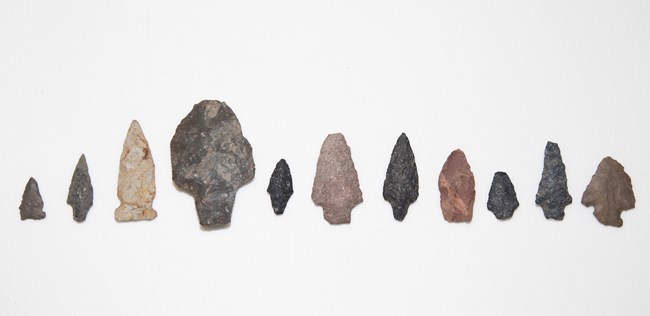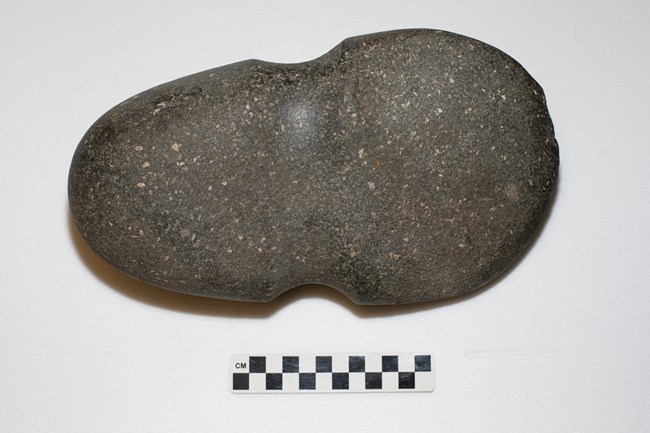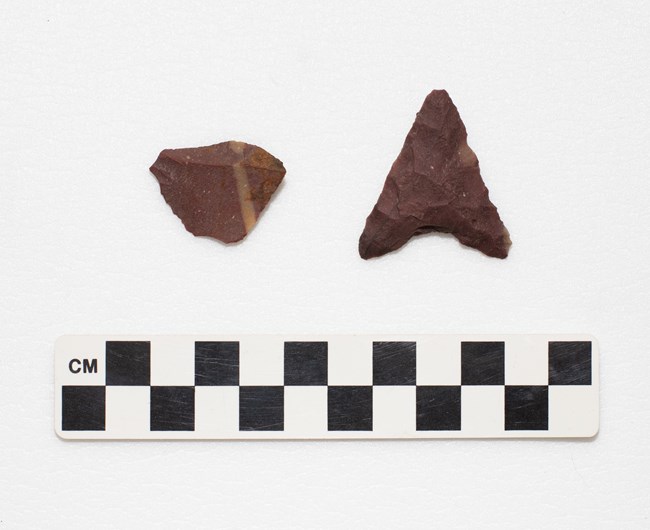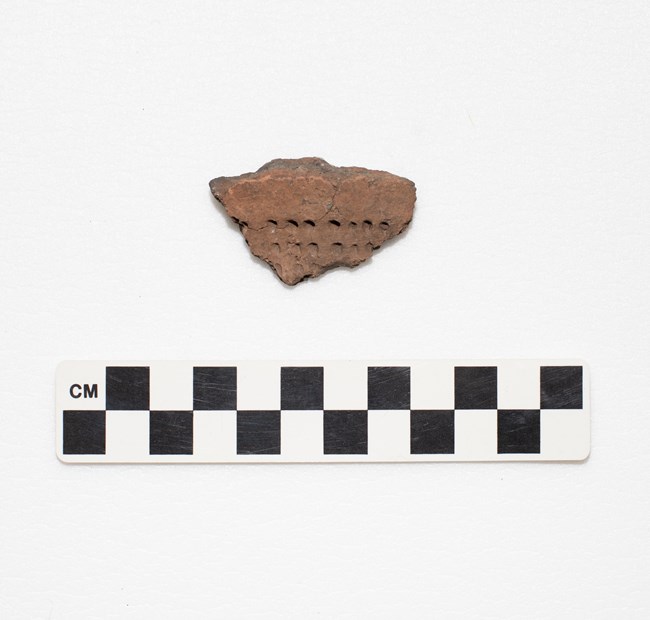Last updated: September 28, 2021
Article
Types of Native American Artifacts
The Native American archeology collections at Saugus Iron Works National Historic Site consist of a variety of material types totaling over 14,000 artifacts, most of which were excavated from the within the site boundaries through archeological investigations carried out in the 20th century. The precolonial Indigenous artifacts in the Saugus Iron Works collections can be broken down into three main material categories: lithics, ceramics, and organic artifacts.

NPS Photo / Claire Norton
Lithics
Lithic artifacts make up about 98% of the Native American archeological collections at the Iron Works; which consist of chipped and ground stone tools and the byproducts of tool manufacture. These artifacts help archeologists to determine when a site was occupied, how the site was used, as well as information about trade or areas of geographic movement. Chipped stone tools have been made throughout Indigenous history. In the Saugus Iron Works archeological collection, there are examples of a variety of finished chipped stone tools and projectile points which can tell us about the activities performed at the site.
-
Native American Lithics
Join Lissa Herzing to learn about the types of chipped stone artifacts found at Saugus Iron Works.
- Duration:
- 2 minutes, 40 seconds

NPS Photo / Claire Norton
Ground stone tools were made beginning in the Archaic period, through grinding two stones together and removing parts of the stone gradually until the desired shape was reached. All sorts of types of ground stone tools were made including axes, celts, hammerstones, plummets, sinkers, and more.
The large full grooved axe to the left was likely used by Native Americans to aid in the felling of trees. This example is from the Middle to Transitional Archaic period, made between 8,000-2,700 years before present (BP), and would have had a wooden handle attached in the groove. Other types of ground stone tools were used in the process of making a dugout canoe, through burning and scraping the interior of a large tree trunk.

NPS Photo / Claire Norton
The type of stone material Native peoples used to make tools and projectile points varies by geographic region, often based on what stone resources are available locally. In New England, there are several types of volcanic stones utilized by Indigenous peoples throughout time, and these are very well represented in the Iron Works' lithic collections. This evidence shows how the local natural resources were incredibly important to Indigenous communities during the precolonial past.
Saugus rhyolite, or Saugus “Jasper”, is a type of stone that was found right here in Saugus, MA and used to make stone tools! It is a type of fine-grained rhyolite, dark reddish to pink in color with randomly occurring cream colored veins. Here is an example of a large flake and complete Levanna point made from Saugus rhyolite. This stone has been called “jasper” because of its color and texture, but it is not a true jasper like what is found in the quarries of Pennsylvania.

NPS Photo / Claire Norton
Ceramics
There are very few examples of Native American ceramics in the archeological collections at Saugus Iron Works. Ceramics, or pottery were used as storage and cooking vessels by Native Americans.
The lack of ceramics in the archeological collections at the Iron Works could be due to a lack of use of the site during the Woodland period, or it could be because the pottery is brown in color and can often be misidentified during archeological excavation.
Here you see an example of a ceramic fragment that was found at the site archeologically. This is an example of a punctate decorated ceramic fragment; the design was created by the maker using a stick or other wedge like implement to make impressions in the clay in various designs. This type of design was used on ceramics during the Middle to early Late Woodland period, from about 2,000-750 years BP.
Organic Artifacts
The last category of material that has been found archeologically in association with other Indigenous materials are organics materials; animal bones and botanical remains. These artifacts can teach us about food practices among the Indigenous peoples of the Saugus region. Tools can also be made from animal bones. Organic artifacts are represented in the collection in an even smaller quantity than the ceramic artifacts. This is likely due to poor preservation in the soil, which is common at other precolonial and even more recent archeological sites in New England.
There is great research potential in Native American archeological collections at Saugus Iron Works National Historic Site, in particular, the vast amounts of lithic artifacts which represent a span of thousands of years of history at the site, illustrating the use of the site long before the arrival of colonists in the region and the establishment of the integrated Iron Works.

